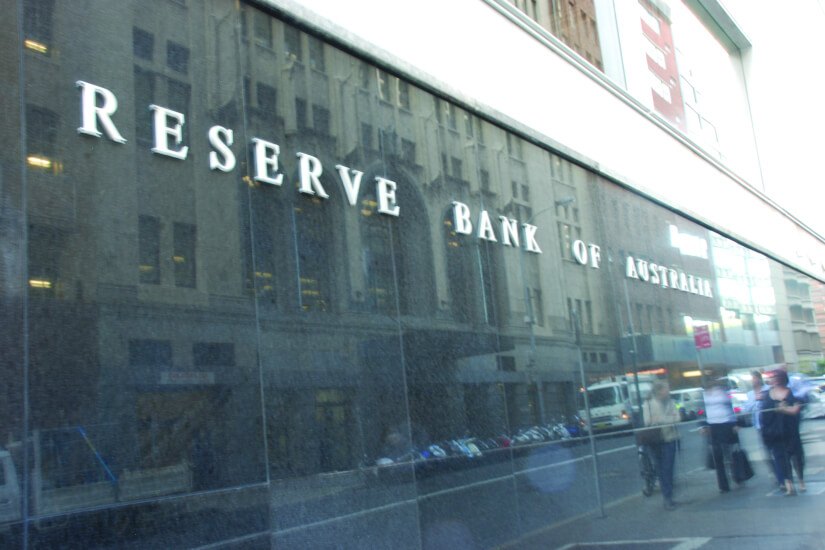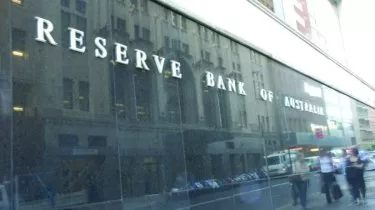Retirement
Where are Australian interest rates heading?
Recent remarks from the Reserve Bank of Australia have led some investors to believe a round of quarterly rate hikes are imminent, but a leading economist says this is doubtful.
Where are Australian interest rates heading?
Recent remarks from the Reserve Bank of Australia have led some investors to believe a round of quarterly rate hikes are imminent, but a leading economist says this is doubtful.

The release of minutes from the Reserve Bank of Australia’s (RBA) last meeting has prompted a strong market reaction, which chief economist of AMP Capital Shane Oliver said is “way over the top”.
The market’s reaction came in response to the discussion of a 3.5 per cent ‘neutral rate of interest’ – referring to an interest rate which is “consistent with growth at potential, inflation at target and which neither causes the economy to accelerate or decelerate,” Mr Oliver said.
“Some have interpreted this as indicating that a series of eight quarterly rate hikes of 0.25 per cent are imminent — this is very doubtful,” he added.
Mr Oliver noted that even Guy Debelle, the deputy governor of the RBA, said no significance should be attached to the fact this neutral rate of interest was discussed, and explained that while the figure can be useful as a tool for policy makers, it isn’t a “firm target” central bankers typically aim to achieve.

“The neutral rate is a rubbery, rather academic concept,” he said.
“In theory it should be around long run potential nominal growth, but it can move around a lot given attitudes to debt and debt levels, the gap between the rates bank lend at and the official cash rate, inflation expectations, uncertainty about what potential growth is.”
Mr Oliver said quarterly rate hikes were very unlikely given the flow-on effect it would have on household interest payments, pushing the ratio of payments to income from its current level of 8.6 per cent to “around 12 per cent”.
“This would be well above the average ratio of 9.6 per cent since 2000, above the 2011 peak of 11.4 per cent and towards the pre-GFC peak of 13.2 per cent, both of which saw hits to consumer spending,” he said.
“The hit this time would likely be greater as unlike a decade ago households lack the optimism to take on more debt to cover higher interest payments. So the 3.5 per cent of income hit to spending power would likely take a big chunk out of consumer spending.”
This ratio would be around three times as large for households with mortgages, and larger again for those in Sydney and Melbourne, Mr Oliver added.
Increases to the interest rate would also push the Australian dollar up higher against the US dollar, “exacting another round of damage on the economy just at a time when we still need a lower currency”, Mr Oliver said.
“Reflecting all these influences, when it does come time to start raising rates the RBA won't be on autopilot on its way up to 3.5 per cent but rather will be incremental,” he said.
“As we have seen with the US Federal Reserve the process is likely to be very gradual and we doubt that rates will be able to go as high as 3.5 per cent any time soon as the RBA won't want to crash the economy.”

Retirement Planning
Majority of Australians still unsure about their retirement prospects
A recent survey conducted by MFS Investment Management® has shed light on the ongoing uncertainty faced by many Australians regarding their retirement plans. Despite a slight increase in confidence ...Read more

Retirement Planning
Wage growth steadies as businesses navigate economic challenges
In a sign that the Australian labour market may be finding equilibrium, wage growth has stabilised this quarter, according to Employment Hero's latest data. This development comes as employers ...Read more

Retirement Planning
Simplified retirement advice: Key to overcoming behavioural biases, experts say
In a bid to enhance retirement outcomes for Australians, a recent whitepaper by Industry Fund Services, in collaboration with Challenger, has highlighted the importance of simplifying retirement ...Read more

Retirement Planning
Rest launches Retire Ready digital experience to empower members approaching retirement
Rest, one of Australia’s largest profit-to-member superannuation funds, has unveiled a new digital experience aimed at making retirement preparation simpler and more personalised for its members. Read more

Retirement Planning
New Framework Aims to Bridge Australia’s Financial Advice Gap
A ground-breaking framework introduced by the Actuaries Institute promises to revolutionise how Australians access financial support, potentially transforming the financial wellbeing of millionsRead more

Retirement Planning
The downsizer dividend: how Australia’s ageing shift will reshape property, finance and AI strategy
Downsizing is moving from a personal milestone to a system-level lever for Australia’s housing market. As policymakers court reforms and agents eye fresh listings, the real profit pools will accrue to ...Read more

Retirement Planning
Half of Australians financially insecure about retirement as AMP launches new initiative
In a significant move aimed at addressing the retirement concerns of Australians, AMP has unveiled the Retirement Confidence Pulse, a national barometer designed to gauge the financial confidence of ...Read more

Retirement Planning
North introduces Grow to expand Australia's financial advice footprint
In a bid to bridge the gap between the demand for financial advice and its accessibility, North, a prominent platform for superannuation and retirement in Australia, has launched an innovative ...Read more

Retirement Planning
Majority of Australians still unsure about their retirement prospects
A recent survey conducted by MFS Investment Management® has shed light on the ongoing uncertainty faced by many Australians regarding their retirement plans. Despite a slight increase in confidence ...Read more

Retirement Planning
Wage growth steadies as businesses navigate economic challenges
In a sign that the Australian labour market may be finding equilibrium, wage growth has stabilised this quarter, according to Employment Hero's latest data. This development comes as employers ...Read more

Retirement Planning
Simplified retirement advice: Key to overcoming behavioural biases, experts say
In a bid to enhance retirement outcomes for Australians, a recent whitepaper by Industry Fund Services, in collaboration with Challenger, has highlighted the importance of simplifying retirement ...Read more

Retirement Planning
Rest launches Retire Ready digital experience to empower members approaching retirement
Rest, one of Australia’s largest profit-to-member superannuation funds, has unveiled a new digital experience aimed at making retirement preparation simpler and more personalised for its members. Read more

Retirement Planning
New Framework Aims to Bridge Australia’s Financial Advice Gap
A ground-breaking framework introduced by the Actuaries Institute promises to revolutionise how Australians access financial support, potentially transforming the financial wellbeing of millionsRead more

Retirement Planning
The downsizer dividend: how Australia’s ageing shift will reshape property, finance and AI strategy
Downsizing is moving from a personal milestone to a system-level lever for Australia’s housing market. As policymakers court reforms and agents eye fresh listings, the real profit pools will accrue to ...Read more

Retirement Planning
Half of Australians financially insecure about retirement as AMP launches new initiative
In a significant move aimed at addressing the retirement concerns of Australians, AMP has unveiled the Retirement Confidence Pulse, a national barometer designed to gauge the financial confidence of ...Read more

Retirement Planning
North introduces Grow to expand Australia's financial advice footprint
In a bid to bridge the gap between the demand for financial advice and its accessibility, North, a prominent platform for superannuation and retirement in Australia, has launched an innovative ...Read more








